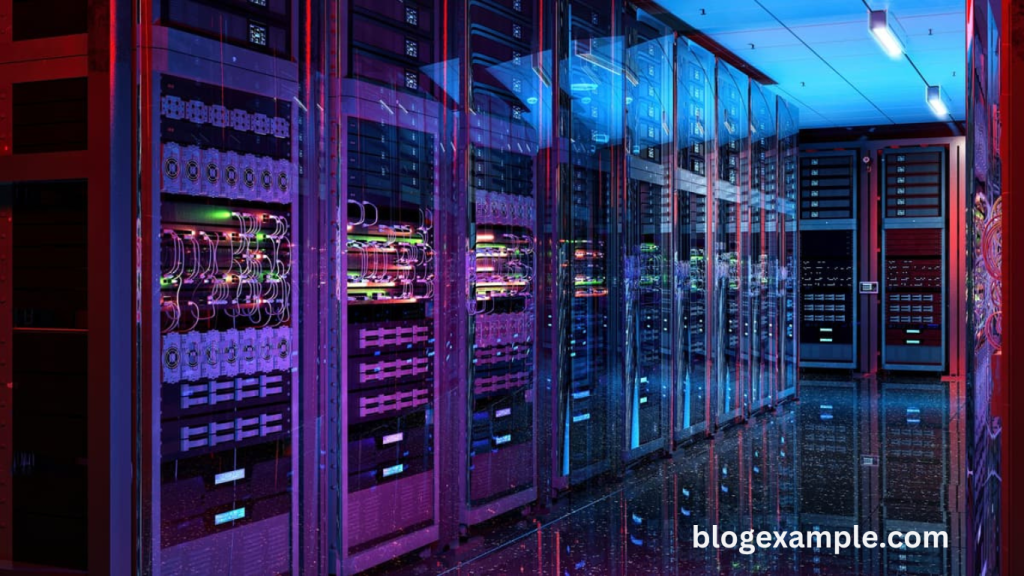Data centers are the digital backbone of the modern world. Every click, stream, or cloud upload relies on massive infrastructure working around the clock. These hubs, packed with servers, process an enormous volume of data every second, consuming massive amounts of electricity. With rising demand for cloud services, artificial intelligence, and high-performance computing, energy use continues to climb steadily. One of the major contributors to this energy load is cooling. Servers generate heat, and without efficient cooling, performance drops or failures occur.
Traditional Cooling Methods and Their Limitations
Air conditioning systems, water-cooled solutions, and advanced ventilation have been the go-to technologies for keeping data centers operational. However, these methods are far from sustainable. They often use refrigerants with high global warming potential, and the energy required to run them contributes significantly to a data center’s carbon footprint. Even with modern optimization, traditional cooling can account for nearly 40% of total energy use in a facility. These inefficiencies have sparked global interest in alternatives that can maintain performance without environmental trade-offs.
Laser Cooling as a Game-Changing Technology
Laser cooling, once confined to theoretical physics and niche applications, is now showing promise in practical environments. The basic principle involves using lasers to slow down the motion of atoms or molecules, effectively lowering their temperature. In recent developments, scientists have adapted this technique to work with semiconductor materials and components commonly used in electronics. By doing so, they’ve opened a door to passive, contactless cooling methods that don’t require compressors, fans, or fluids.
How Laser Cooling Works in Electronics
At the core of this method lies anti-Stokes fluorescence. When a specially tuned laser hits a material, the atoms absorb the light and emit it back at a higher energy level, carrying away heat. This subtle yet powerful mechanism allows targeted cooling without adding external infrastructure. In microchips, laser beams can be focused with pinpoint accuracy, addressing localized hot spots that often escape conventional cooling systems. The technique is still in its early stages for widespread deployment but shows strong potential.
Read More : History-making probe achieves closest-ever approach to the sun
Efficiency Gains and Sustainability Benefits
Reducing energy demand at the source is one of the most effective ways to cut operational costs and environmental impact. Laser cooling can directly target heat generation areas, minimizing the need for entire facility-level cooling systems. As this technology advances, data centers could see significant drops in electricity consumption. This results in lower emissions, reduced dependency on carbon-intensive grids, and enhanced sustainability profiles for companies operating large-scale server farms. It also means that growing demand doesn’t have to equal growing environmental harm.
Impact on Hardware Design and Future Architectures
Implementing laser cooling on a wider scale may lead to a complete rethink of server and chip design. With the ability to cool specific components precisely, engineers could stack processors more densely or reduce spacing between heat-sensitive parts. This shift could enhance performance, reduce material use, and shrink physical data center footprints. Smaller, more efficient hardware powered by cutting-edge cooling might soon become the industry standard.
Real-World Applications and Early Experiments
Several research labs and tech companies have started testing laser cooling setups in controlled environments. Early prototypes have demonstrated measurable temperature drops without relying on moving parts. Universities and tech giants are collaborating to overcome material limitations and improve laser tuning for broader applications. The speed at which this research is progressing suggests commercial products might emerge sooner than expected, possibly within the next decade.
Challenges Still Ahead in Scaling Laser Cooling
Despite the promise, challenges remain in scaling laser cooling for global use. Cost is one factor; high-precision lasers and specialized materials can be expensive. Integration with existing infrastructure requires careful planning and compatibility adjustments. Energy used by the lasers themselves must be minimized for the process to offer net energy savings. There’s also the question of durability and reliability in real-world conditions, which can differ significantly from lab environments.
Role of Policy and Investment in Accelerating Adoption
Public and private investment will be key in taking laser cooling from innovation to implementation. Governments focusing on clean energy and green technology can support research through grants, tax incentives, and partnerships. Tech companies investing in next-gen data centers have an opportunity to become early adopters and lead industry transformation. As regulatory pressure mounts to cut carbon emissions, green cooling solutions will likely gain more traction.
A Step Toward Greener Technology Infrastructure
Beyond data centers, the implications of laser cooling could extend into other areas like smartphones, laptops, electric vehicles, and medical devices. Any electronic system facing thermal challenges could benefit. This positions laser cooling not just as a niche fix but as a foundational technology for the next wave of sustainable innovation. In a digital-first world where every device adds to the power load, smarter cooling isn’t just helpful—it’s necessary.
Frequently Asked Questions
What is laser cooling?
Laser cooling is a technique that uses laser light to reduce the temperature of materials by slowing atomic motion.
How does laser cooling apply to data centers?
It targets heat-producing components directly, reducing the need for traditional energy-heavy cooling systems like fans and air conditioning.
Is laser cooling more efficient than current cooling methods?
Yes, it has the potential to be more efficient by cooling only the necessary areas without large-scale energy use.
Can laser cooling be used in existing data centers?
Adaptation is possible but may require redesigning components or infrastructure to accommodate precise laser applications.
What materials are needed for laser cooling?
It typically involves specialized semiconductors and rare-earth-doped crystals, which are still being refined for commercial use.
Is laser cooling environmentally friendly?
Yes, it reduces reliance on harmful refrigerants and lowers overall power consumption, making it a greener alternative.
When will laser cooling become commercially available?
While still in research phases, early applications may appear within the next 5 to 10 years.
Will laser cooling replace all current cooling systems?
Not immediately. It’s likely to complement existing systems before becoming a full-scale replacement in the future.
Conclusion
Laser cooling represents a forward-thinking leap in green technology, offering a cleaner, more precise method to manage heat in data centers. As the demand for digital services grows, innovations like this are crucial for sustainability. Though still in development, the technology’s potential is significant. With continued research, investment, and collaboration, laser cooling could become a standard feature in next-generation data centers and beyond.

